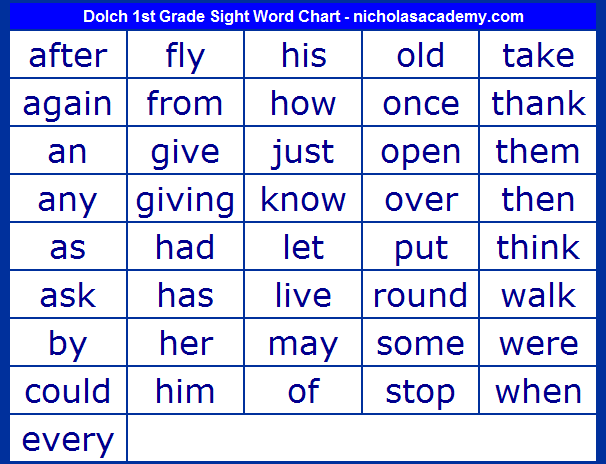

The games are of course the most entertaining part of the sight words program, but they need to wait until after the first part of the sight words lesson. We have numerous sight words games that will make that repetition fun and entertaining for you and your child. Learning sight words takes lots of repetition. Use your game time to provide lots of repetition for these words until the child has thoroughly mastered them. Note: The child should have a good grasp of - but does not need to have completely mastered - a word before it gets replaced in your lesson plan. If he has trouble with more than two of the review words, then set aside the new words you were planning to introduce and devote that day’s lesson to review. If your child struggles to recognize a word, cover that word again in the main lesson, going through all five teaching techniques. Go through the See & Say exercise for each of the review words. Remember: solid knowledge of a few words is better than weak knowledge of a lot of words! Words often need to be covered a few times for the child to fully internalize them. 2.2 Review Old Wordsīegin each subsequent lesson by reviewing words from the previous lesson. As your child gets more advanced, you might increase the number of words you work on in each lesson. This part of a sight words session should be brisk and last no more than ten minutes. This lesson should establish basic familiarity with the new words. Then introduce the second word, and go through all five teaching techniques, and so on. Hold up the flash card for the first word, and go through all five techniques, in order.

Introduce one word at a time, using the five teaching techniques. Rebecca Mannis, Ph.D.When first beginning sight words, work on no more than three unfamiliar words at a time to make it manageable for your child. Help your child take another step towards reading with this suggested list of sight words for first graders:īy practicing these sight words with your first grader, you’ll help them become the confident reader that you know they can be.Įlena Smith, CCC-SLP, founder and clinician at Ivy Speech and Languageĭr. With all of that in mind, it certainly doesn’t hurt to help familiarize your child with sight words, which are the building blocks for budding readers. Edward Fry is responsible for adding to list, with over 1,000 words that students in grades three-through-nine should know. Edward William Dolch created what is now known as “Dolch sight words,” a list of the most common words for kindergarten through third grade, while Dr. In the world of sight words, there are two names you need to know: Dolch and Fry. What sight words should a first grader know? In short, sight words are those that are seen so often that they’re instantly recognizable. “These words move into long-term memory and are no longer sounded out,” she says. Rebecca Mannis, a learning specialist and developmental psychologist, because of the sheer number of times they appear in children’s books and other reading materials. Sight words are commonly referred to as “high frequency words”, explains Dr. Instead, each school district determines how many words are expected to be acquired by the end of each grade.” If you’re unsure of the sight words that your child should know, speak to your child’s teacher to get a list that you can practice with your child.

“Although the Common Core Curriculum contains a goal for reading ‘common high-frequency words by sight’, it does not provide a specific list of sight words by grade level. “Sight words are often used as a measure of student’s school preparedness and progress, as sight word knowledge contributes to reading fluency,” Elena Smith, a speech and language pathologist, explains. The concept of sight words - and they way that lists of sight words are created - is quite simple. If you’re new to sight words, don’t worry. It can be fun to practice them with your child - more fun than, say, subtraction facts. And remember, working on sight words don’t have to be stressful. If they’ve mastered the sight words for kindergarten, they’re probably ready to tackle the sight words for first grade. But when it comes to really getting the hang of reading, learning sight words - words that your child should be able to know upon, well, sight - can be incredibly helpful. By the time your child enters first grade, they’ve may have already been exposed to the basics of learning to read and write.


 0 kommentar(er)
0 kommentar(er)
